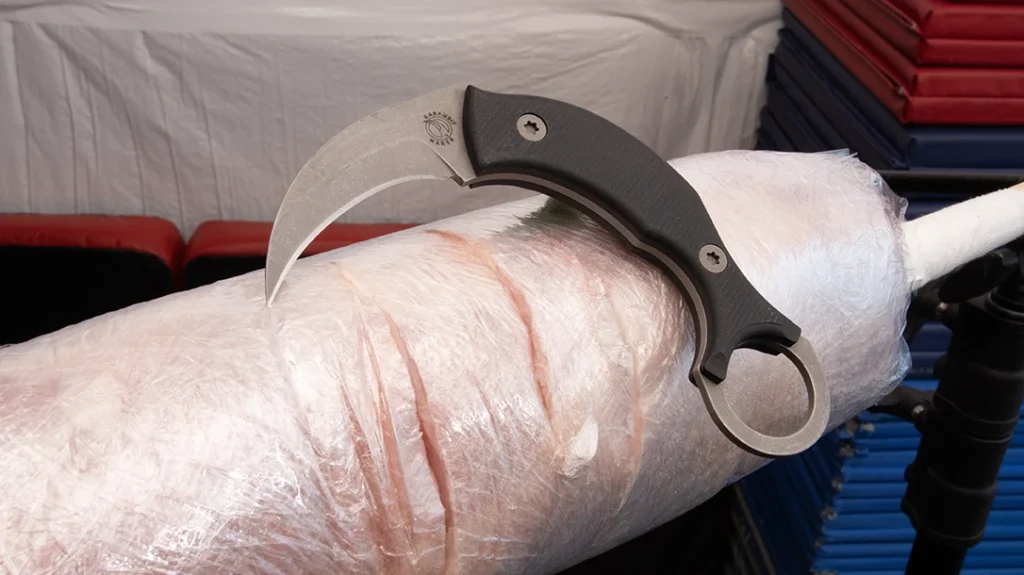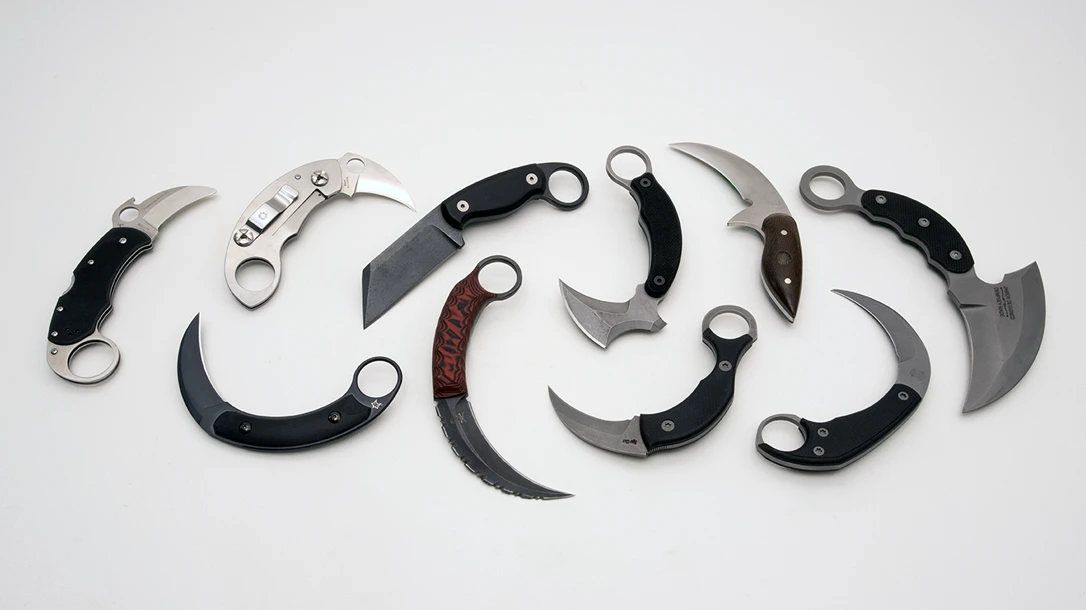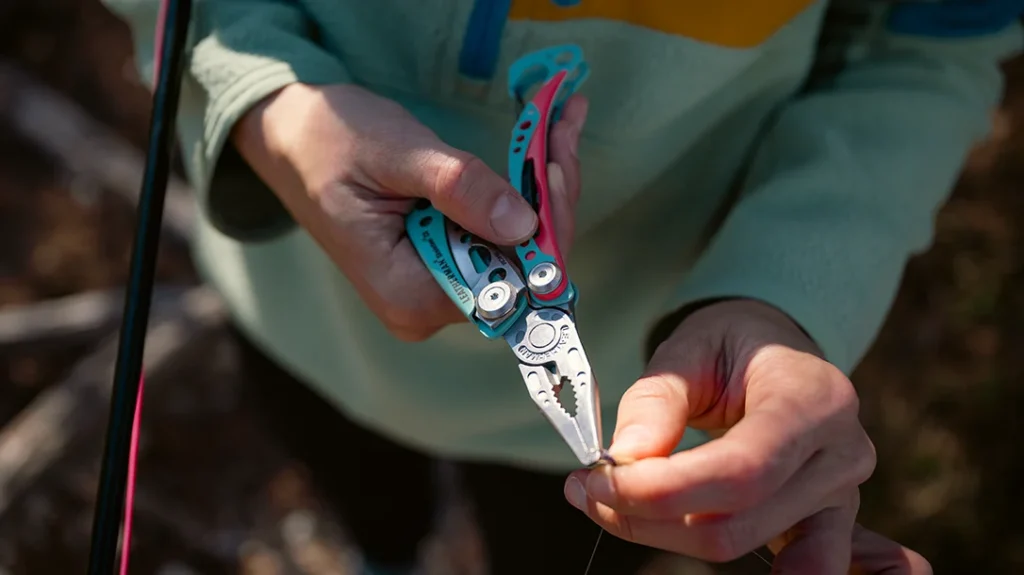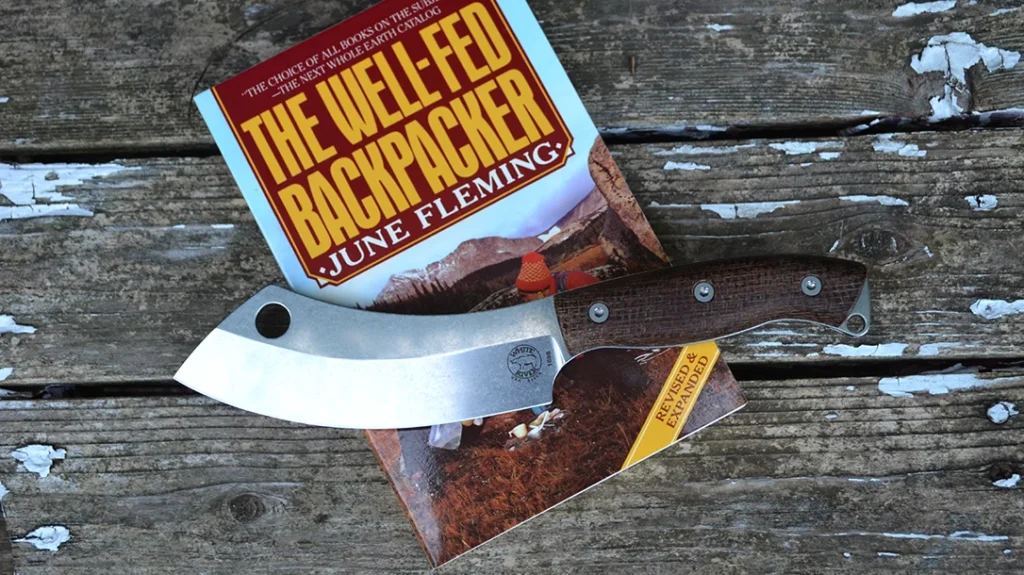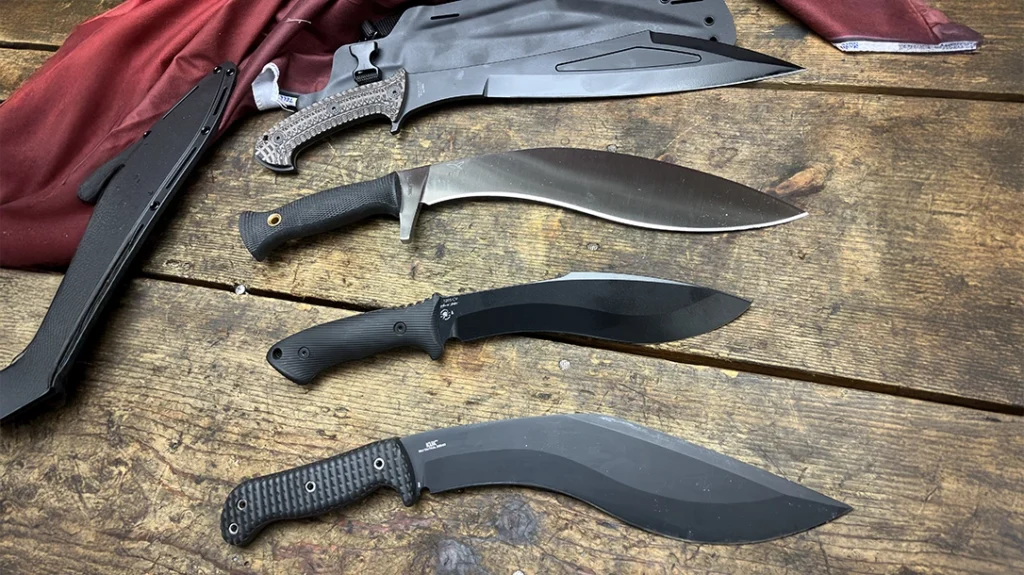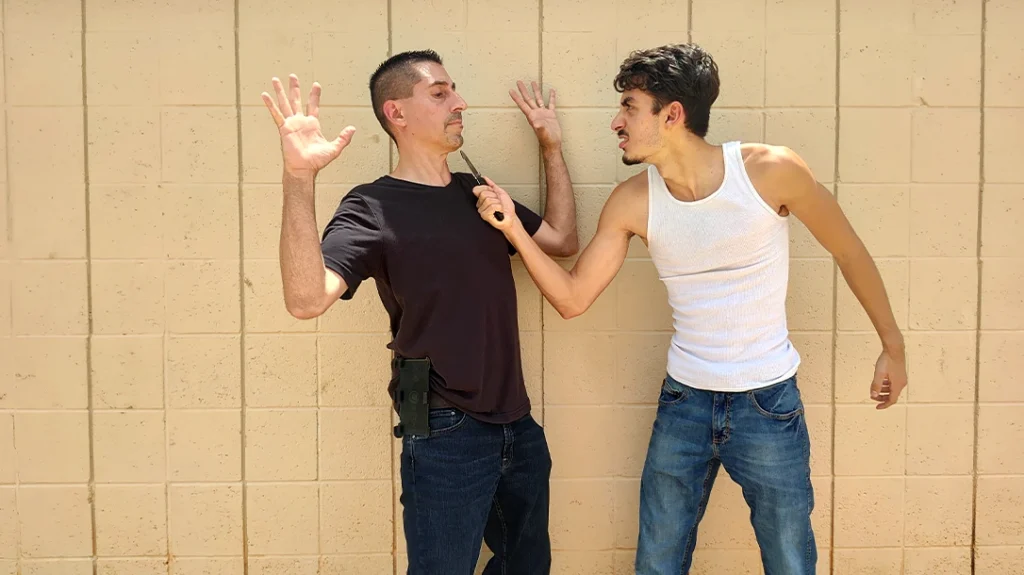When it comes to combative knife design, the more sophisticated a knife’s form is, the more specific the tactics of wielding it must be. A shining example of this principle is the karambit. Perhaps more than any other style of knife, the design of a karambit determines which tactics will work with it—and which won’t. Unfortunately, most people are content to “go through the motions” of karambit technique and willfully mistake flash for function. In a real self-defense situation, that can get you killed.
Karambit Design: The Functional “Bottom Line”
To be useful as a self-defense weapon, a knife must cut or puncture well enough to cause fight-stopping anatomical damage. Period. Sophisticated manipulation techniques, although visually impressive, are meaningless if they don’t cause substantial injury.
While it is possible that an attacker can suffer a minor cut and psychologically choose to stop, that’s not reliable. Only cuts and punctures that are deep enough to sever muscles, tendons, nerves, or major arteries produce decisive physiological stops.
Advertisement — Continue Reading Below
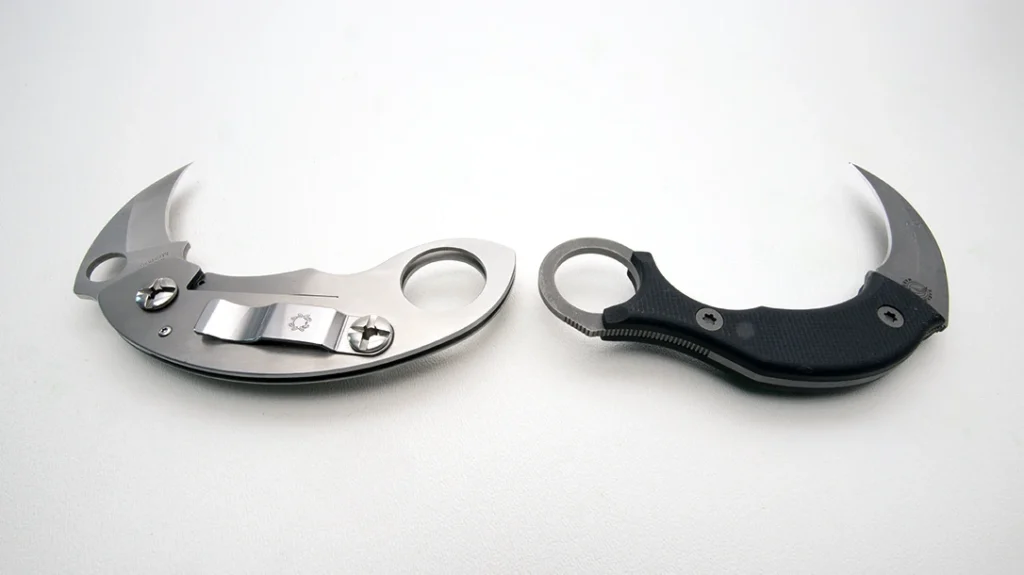
To do that, a knife must be wielded in a way that causes the edge or point to impact with substantial force. For cuts, that force must then be maintained or, ideally, increased as the edge is drawn through the target. At the same time, if the knife should strike underlying bone, it must not hook or snag.
These functional principles apply to all edged weapons. However, they are particularly important when it comes to evaluating karambit design.
Advertisement — Continue Reading Below
The Theory of Four Cuts
To most people, the defining features of a karambit are a curved, hawkbill-style blade and an index-finger ring. Although not all traditional karambits actually had rings, the ring is what allows the “full scope” of karambit technique. It provides the option of two grip positions: a “retracted” position and an “extended” position.
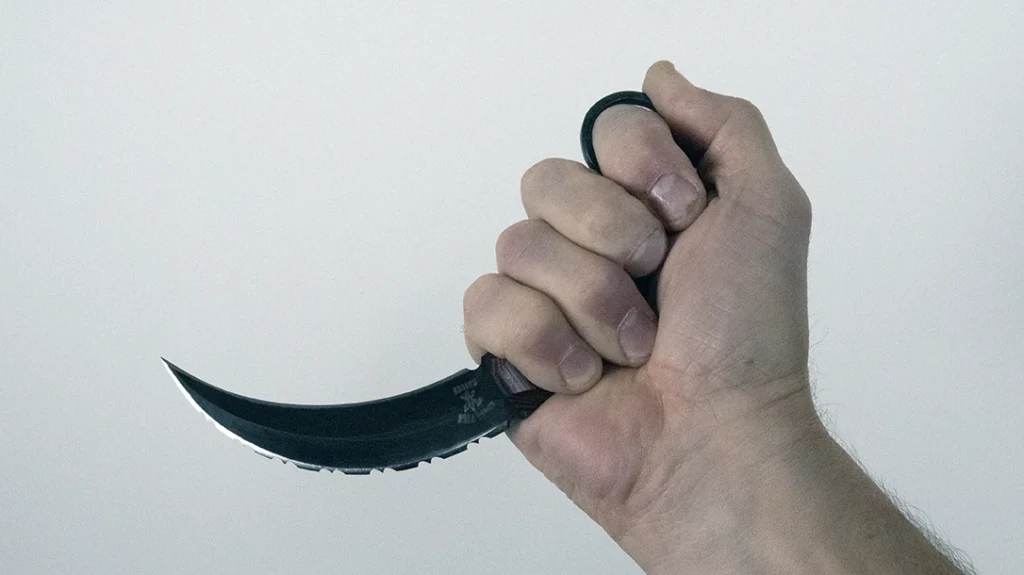
The retracted position is basically a full-fist reverse, or “icepick,” grip with the index finger inserted through the ring. In the extended position, the blade is spun outward, using the index finger as a pivot point. Because a traditional karambit blade was generally double-edged, it could theoretically cut in two ways in each position. In the retracted position, it could cut both “edge out” and with a pulling “edge-in” motion.
Advertisement — Continue Reading Below

In theory, it could do the same in the extended position. As the blade was spun outward, the convex edge would ballistically strike and cut. Once extended and stabilized with the grip of the thumb, it could also be pulled back to cut with the concave edge.
As noted, all this sounds great in theory. In reality, it’s impossible for a single karambit design to do all these actions well. Again, “well” means cutting deeply enough to create substantial physiological damage.
Advertisement — Continue Reading Below
Cutting Dynamics of the Karambit
To cut deeply, an edge must apply and maintain substantial pressure to the target. At the same time, it must be drawn longitudinally through the material being cut. To do both of those actions effectively, it must be shaped properly and stabilized firmly.
In the retracted position, the karambit is supported solidly by the entire hand. As such, it will cut with power and effect in both directions. If the blade is radically curved, however, it becomes prone to snagging on bone during forward cutting motions.
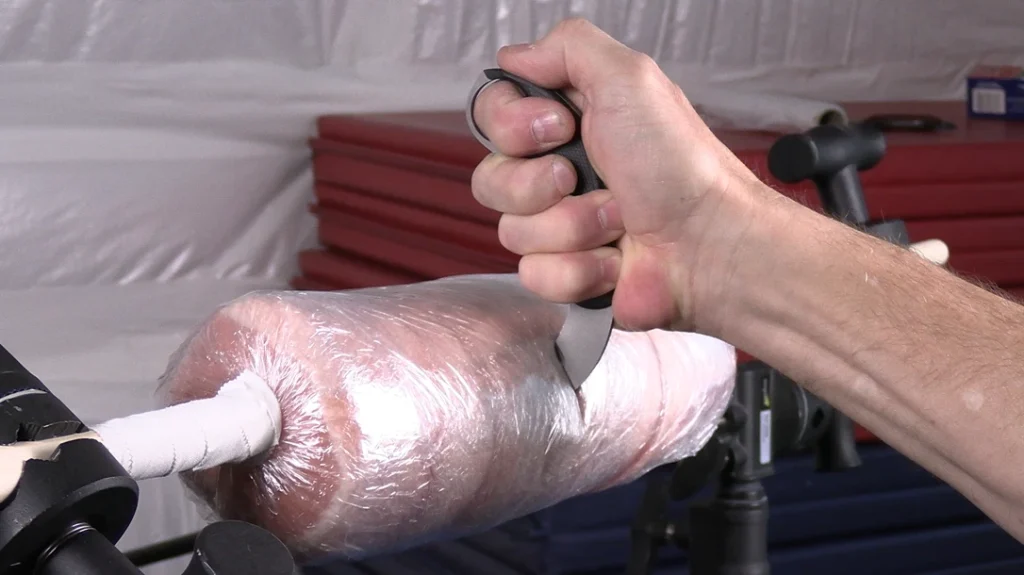
Advertisement — Continue Reading Below
Spinning extension cuts rely primarily on the momentum and mass of the blade. With the index finger as the center of the arc, they also work best with blades that are less curved. Their straighter shape makes targeting easier and transfers more energy into the impact of the edge.
The convex edge of radically curved blades can literally define the outside radius of the cutting arc. This typically limits the effectiveness of this tactic to superficial cuts. It also requires very precise distance judgment and can easily result in dangerous bounce-backs.
One of the “signature” tactics of a karambit is a “pulling” cut using the concave edge of the blade in the extended position. This only works with knives that have deeply curved concave edges. It also works best when the karambit’s handle includes a “brake.” This inward curve near the ring contours around the middle finger during an extended pull cut. Without it, a forceful pulling cut could easily break that finger.
Advertisement — Continue Reading Below
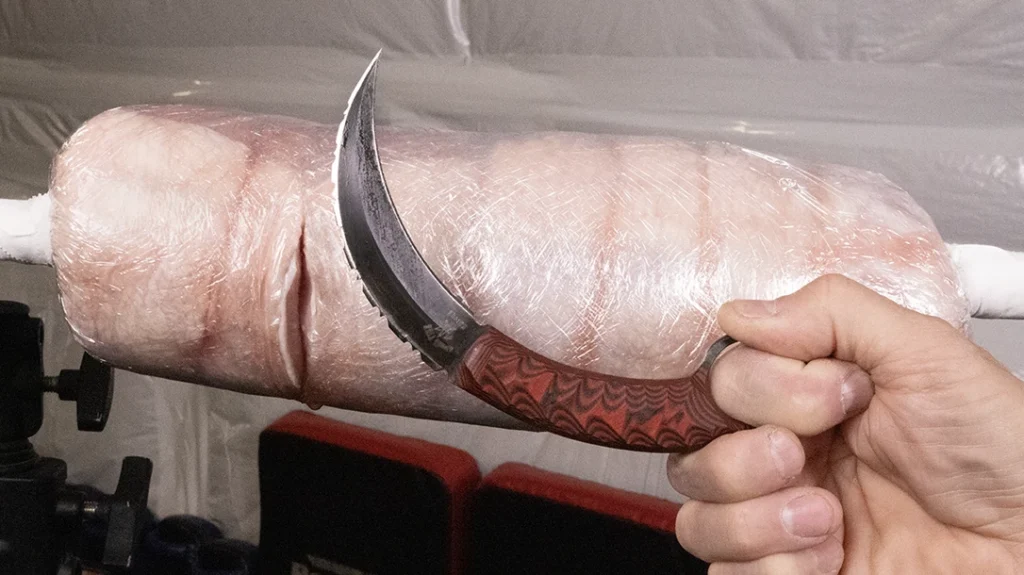
Beyond the Basics
The four cutting tactics described above form the basics of most karambit techniques. For ease of reference, I classify them as: retracted outward cut, retracted pull cut, extended ballistic cut, and extended pull cut. However, to truly understand karambit tactics and evaluate karambit designs, it helps to look even deeper.
In addition to these movements, the retracted karambit can also be used with a “hammering” motion—like a hammerfist strike. With straighter knives, this can produce a thrust with the blade’s point. With curved, double-edged blades, it translates to a “chopping” cut with the convex edge. Curved, single-edged blades deliver an impact strike, but do not cut or puncture.
Advertisement — Continue Reading Below
In the retracted position, the hand can also execute linear “punching” motions. These can strike with the ring itself, like a brass knuckle. With longer, deeply curved blades, the point can also be aimed to make contact first and penetrate as a thrust. Shorter curved blades can puncture with the point and continue with a “plowing” push cut.
This unusual method of empty-hand punching is often seen in Indonesian pencak silat systems. Although it seems the practitioner is striking with the little-finger side of the fist or the forearm, the movement actually represents karambit technique.
Tools and Tactics Must Be Complementary
Based on this deeper understanding of karambit functionality, it’s clear that no single design can do everything well. If you want to cause fight-stopping damage with an extended pulling cut, you need a hooked blade and a “brake.” That choice makes your knife less effective at spinning extension cuts and more likely to catch on bone. At the same time, it may facilitate “chopping” cuts using a hammering action.
Advertisement — Continue Reading Below
Similarly, if you want to cut limbs without snagging, you’ll want a less-curved blade. That choice can also enhance the knife’s effect with extended ballistic cuts, but only if it’s double-edged. With this style of knife, hammering motions translate to thrusts with the blade point.
The bottom line is that the specific karambit design you choose must properly complement your skills and tactics. It makes no sense to practice techniques that won’t create fight-stopping physical damage with your actual carry knife. Your tactics must also continue to work after you actually make contact with a live blade.
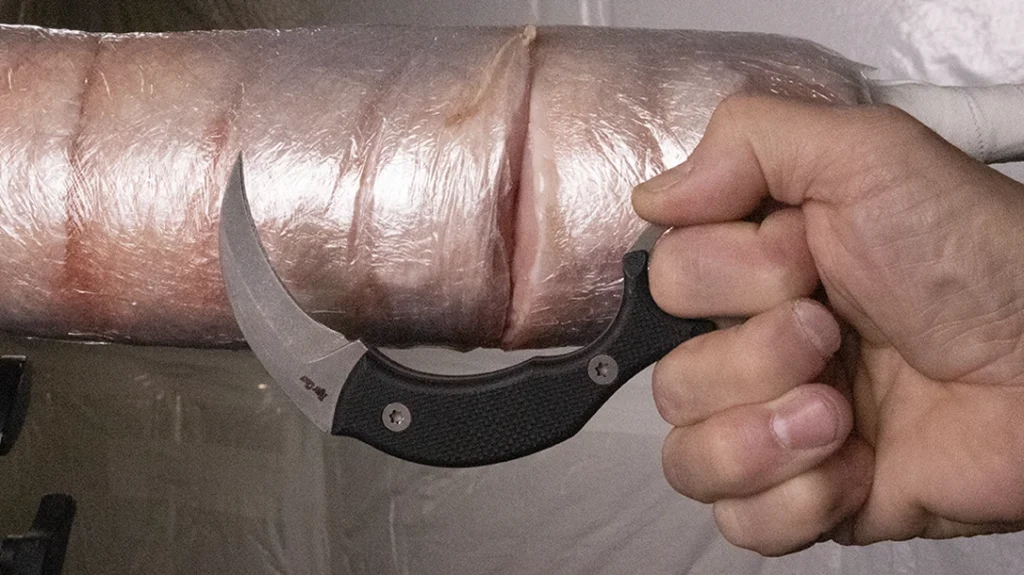
Spinning a training knife near your partner is one thing. Making contact and cutting an attacker with real effect is very different.
Finding the Right Karambit for You
Many knifemakers and manufacturers offer so-called “tactical” patterns. Unfortunately, few of them understand the true relationship between knife design and edged-weapon tactics.
When it comes to the nuances of karambits, Greg Wegrzycki—aka Karambit Maker—stands above the rest. Greg has been obsessed with karambits for almost 20 years and has studied both traditional and contemporary examples extensively. He also trained with and befriended the late pencak silat Guru Jak Othman, learning from him the little-known subtleties of karambit design.
Wegrzycki’s karambits are not only flawlessly crafted, but they also reflect a deep understanding of functional combative detail. He developed much of that hard-earned knowledge not only through study, but through extensive live-blade cutting tests. As a true custom knifemaker and martial artist, he can also create designs specifically tuned to your personal karambit skills and tactics.
The karambit is a fascinating weapon with great potential as a self-defense tool. However, realizing that potential requires the correct pairing of skill and knife design. Unless those two elements are in concert, your defensive abilities are more artistic than functional.
